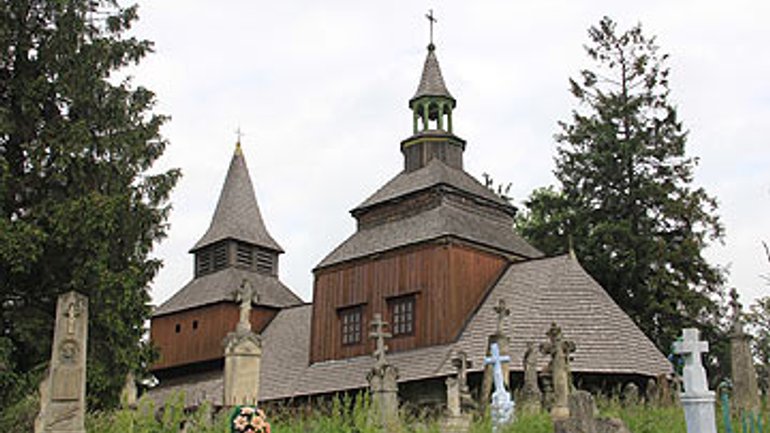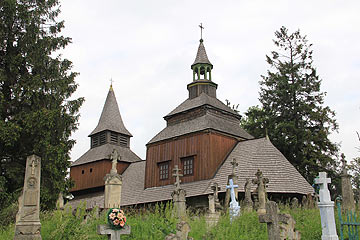Wooden Churches in Ukraine and Poland Inscribed on UNESCO World Heritage List

Unique Ukrainian wooden churches in the Carpathian region were inscribed on the UNESCO World Heritage List. The decision was made on June 21 at the 37th session of the UNESCO World Heritage Committee, which is taking place in Cambodia.
The Wooden Tserkvas of the Carpathian Region in Poland and Ukraine includes 16 churches: 8 from Ukraine and 8 from Poland, TVi reported.
 The churches in Ukraine which where inscribed: St. Yuriy's (George's) Church, Drohobych(Lvivska Oblast, late 17th century); Descent of the Holy Spirit Church, Potelych(Lvivska Oblast, 1502); the Holy Trinity Church, Zhovkva (Lvivska Oblast, 1720); St. Dmytro's Church, Matkiv (Lvivska Oblast 1838); Descent of the Holy Spirit Church, Rohatyn(Ivano Frankivsk Oblast, early 16th century; the Church of the Nativity of B.V.M., Nyzniy Verbizh (Ivano Frankivsk Oblast, 1808); the Church of St. Archangel Mykhailo, Uzhok (Transcarpathia, 1745); the Church of Ascension of Our Lord, Yasynia (Transcarpathia, 1824).
The churches in Ukraine which where inscribed: St. Yuriy's (George's) Church, Drohobych(Lvivska Oblast, late 17th century); Descent of the Holy Spirit Church, Potelych(Lvivska Oblast, 1502); the Holy Trinity Church, Zhovkva (Lvivska Oblast, 1720); St. Dmytro's Church, Matkiv (Lvivska Oblast 1838); Descent of the Holy Spirit Church, Rohatyn(Ivano Frankivsk Oblast, early 16th century; the Church of the Nativity of B.V.M., Nyzniy Verbizh (Ivano Frankivsk Oblast, 1808); the Church of St. Archangel Mykhailo, Uzhok (Transcarpathia, 1745); the Church of Ascension of Our Lord, Yasynia (Transcarpathia, 1824).
“Situated on the eastern fringe of Eastern Europe, this transnational property includes a selection of 16 tserkvas - churches, built of horizontal wooden logs between the 16th and 19th centuries by communities of the Eastern Orthodox and Greek Catholic faiths. They represent the cultural expression of four ethnographic groups and the formal, decorative and technical characteristics they developed over time. The tserkvas bear testimony to a distinct building tradition rooted in Orthodox ecclesiastic design, interwoven with elements of local tradition, and symbolic references to their communities’ cosmogony. The tserkvas are built on a tri-partite plan surmounted by open quadrilateral or octagonal domes and cupolas. They feature wooden bell towers, iconostasis screens, and interior polychrome decorations as well as churchyards, gatehouses and graveyards,” reads the UNESCO site.









